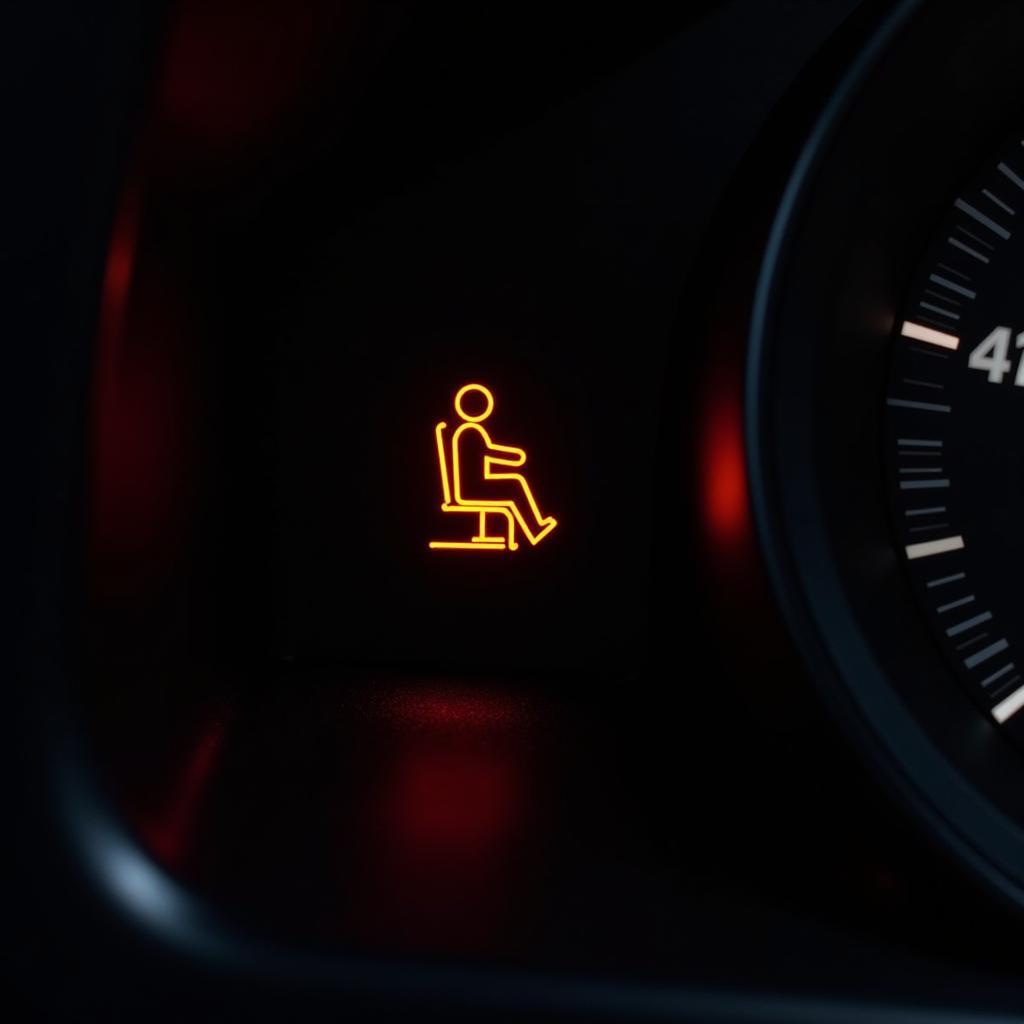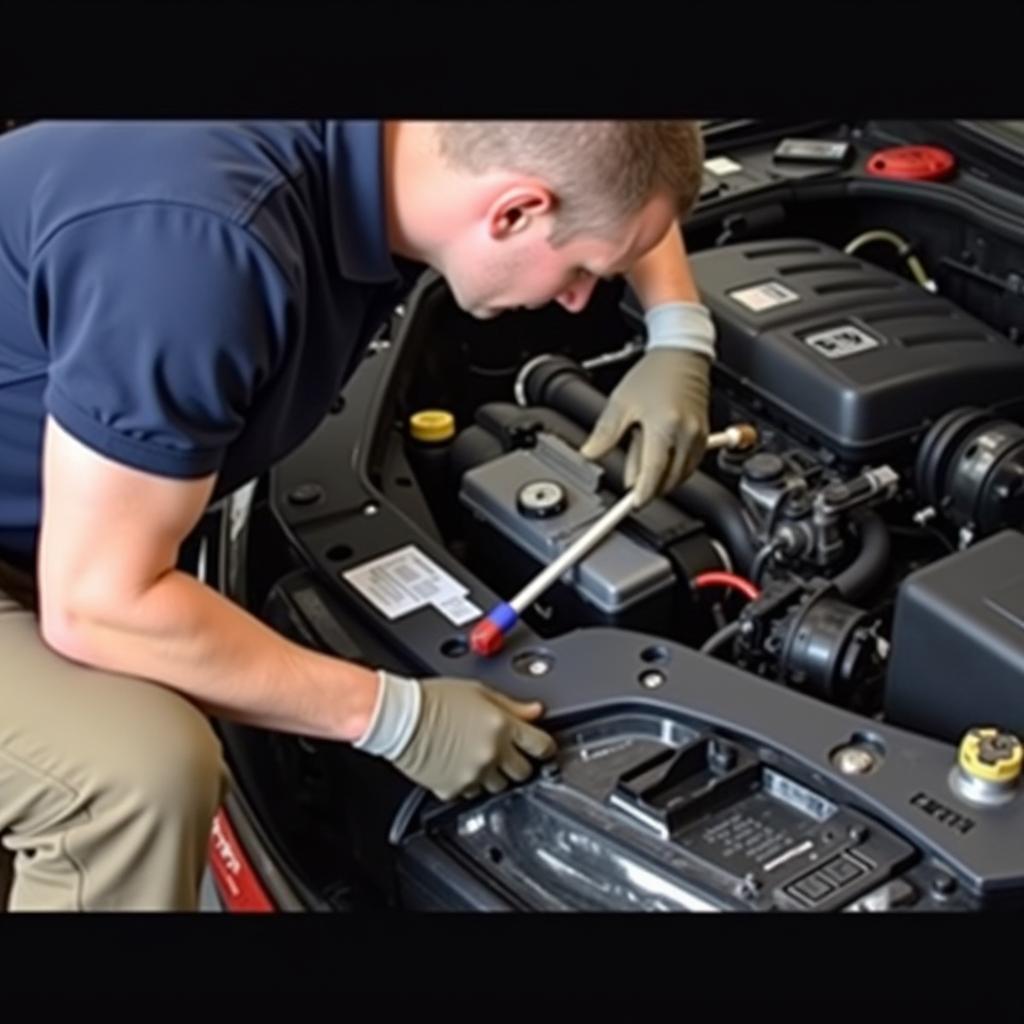An ejection seat warning light flashing on your dashboard isn’t something you want to ignore. While most drivers will never encounter this issue, understanding what triggers this warning and how to address it can be crucial for your safety and your car’s well-being. This comprehensive guide delves into the intricacies of ejection seat warnings, equipping you with the knowledge to handle this rare but potentially critical situation.
Understanding the Ejection Seat Warning
In most modern vehicles, the ejection seat warning light is directly linked to the airbag system. If there’s a malfunction detected in the airbag control unit, wiring, sensors, or the airbags themselves, the ejection seat warning light might illuminate. It serves as an indicator that the airbags, designed to deploy in an accident, might not function as intended.
Common Causes of Ejection Seat Warnings
Several factors can trigger an ejection seat warning. Here are some of the most common culprits:
- Faulty Seat Belt Buckle/Sensor: A malfunctioning seat belt buckle or sensor can disrupt the airbag system’s ability to detect occupancy and trigger a warning.
- Loose Wiring: Vibrations and wear and tear can cause wiring harnesses in the seat or under the floor carpet to loosen or disconnect, affecting signal transmission and leading to a warning.
- Damaged Clockspring: Located in the steering wheel, the clockspring allows for electrical connections while the wheel is turned. Damage to this component can disrupt communication within the airbag system.
- Depleted Car Battery: A weak or depleted car battery can cause voltage fluctuations, potentially triggering various warning lights, including the ejection seat warning.
- Software Glitches: Like any computer-controlled system, the airbag control module can experience software glitches that lead to false warnings.
Troubleshooting an Ejection Seat Warning
If you encounter an ejection seat warning, it’s strongly recommended to seek professional help immediately. However, here’s a general guide to help you understand potential steps involved in diagnosis and repair:
- Visual Inspection: A mechanic will typically begin by visually inspecting the wiring, connections, and components related to the airbag system, looking for any obvious signs of damage or disconnection.
- Diagnostic Scan: Using a specialized diagnostic tool, the mechanic can read fault codes stored in the vehicle’s computer. These codes provide valuable insights into the specific areas where the airbag system is experiencing issues.
- Component Testing: Based on the fault codes and visual inspection, the mechanic will test individual components like sensors, wiring harnesses, and the airbag control unit to isolate the root cause of the problem.
- Repair or Replacement: Depending on the diagnosis, the mechanic will recommend either repairing the faulty component or replacing it entirely. This could involve fixing loose connections, replacing a damaged sensor, or installing a new airbag control unit.
- System Reset: Once the repairs are complete, the mechanic will reset the airbag system using the diagnostic tool. This step clears the fault codes and ensures the system functions correctly.
 Dashboard Warning Light
Dashboard Warning Light
Importance of Professional Diagnosis and Repair
Attempting to diagnose or repair an airbag system yourself is strongly discouraged. Airbag systems are complex and potentially dangerous if handled improperly. Tampering with the system can lead to accidental deployment, causing serious injury. Always rely on a qualified mechanic with the expertise and equipment to handle airbag-related issues safely and effectively.
 Airbag System Diagnosis
Airbag System Diagnosis
Preventing Ejection Seat Warnings
While not all causes are preventable, here are some tips to minimize the chances of encountering an ejection seat warning:
- Regular Vehicle Maintenance: Adhering to your car manufacturer’s recommended maintenance schedule ensures all systems, including the airbag system, are inspected and maintained, reducing the likelihood of component failure.
- Careful Cleaning: When cleaning the interior of your car, particularly under the seats and around the footwells, be cautious not to snag or damage any wiring harnesses connected to the airbag system.
- Battery Health: Keep your car battery in good condition. Regular battery checks and timely replacements can prevent voltage fluctuations that might trigger false warnings.
Conclusion
An ejection seat warning, though rare, demands immediate attention. Understanding its connection to the airbag system, potential causes, and the importance of professional diagnosis and repair is paramount for your safety. By following the recommended maintenance practices and seeking qualified help when needed, you can ensure the optimal functioning of your vehicle’s safety systems.
Frequently Asked Questions
1. Can I drive my car with an ejection seat warning light on?
It is highly discouraged to drive with an active ejection seat warning light. This warning indicates a potential malfunction in the airbag system, which could compromise your safety in an accident.
2. Is an ejection seat warning covered under warranty?
Coverage for ejection seat warning repairs depends on your specific vehicle warranty terms and the diagnosed cause. Warranty typically covers manufacturer defects but might not extend to issues arising from wear and tear or external damage.
3. How much does it cost to fix an ejection seat warning?
The cost of repair varies widely depending on the underlying cause. Simple fixes like wiring repairs might cost less, while replacing a faulty airbag control unit can be more expensive.
4. Can aftermarket accessories interfere with the airbag system?
Yes, installing aftermarket accessories like seat covers without proper consideration for the airbag deployment zones can interfere with airbag functionality and potentially trigger warnings.
5. How often should I get my airbag system checked?
While there’s no specific interval for airbag system checks, it’s generally a good practice to have them inspected during routine vehicle maintenance or if you notice any warning lights.


